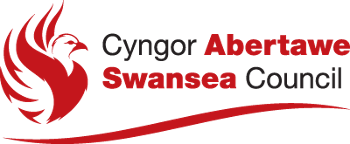Frequently asked questions about street lighting
Find out the answers to the most common questions we get asked about street lighting.
Can a street light be moved or shaded?
If the street light is on the same side of the road as the property it may be possible to limit some of the light by installing a shield.
If the street light is on the opposite side of the road then it is not normally possible to limit the light as it would affect the amount of light onto the road and pavement.
Moving street lights is often difficult. Street lights are spaced to make sure the light shines evenly on the road and pavement and meets British Standards. Moving a single street light will lead to uneven brightness of the lights. Moving a street light may also cause other problems. We will look at each request carefully before deciding to move a street light.
If it is possible to move a street light then the person or company who asked for it to be moved is expected to pay the full cost of moving it.
Can a fault be given priority?
We normally deal with reports of street light faults equally. If you feel that there are special circumstances please say at the time of the report being made. We will try and carry out repairs as quickly as possible.
Maintenance workers came, but the light was not repaired
We try to fix faults on the first visit. If the fault was not fixed then there may be a fault in the electricity supply or new parts are needed.
Why has nobody been around to repair the light?
We aim to respond to reports of street light faults in 10 working days. If there are problems with the electricity supply, a new part is needed or the street light has been damaged then the repair may take longer than 10 working days.
Can I request new or extra street lights in my area?
You can write to the Street Lighting Manager to request new or extra street lights. There is currently a waiting list.
We have lived on this new estate for some time now, why haven't the lights been put on?
The developer will look after the street lights until the road maintenance has been formally adopted by the council.
When will the faulty street light be fixed?
Faults are normally repaired within 10 working days, apart from locations where access is difficult, which may take longer. In an emergency (such as a section of 3 or more consecutive lights are out; a lamppost / illuminated sign has been knocked down; or the panel on the lamppost / illuminated sign has come off exposing wires), we will try to be on site within 2 hours of receiving the report.
If there is a risk of danger (but it is not an emergency), we aim to be on site within 24 hours of getting the report. This includes Belisha beacons, lights on zebra crossings and illuminated bollards.
If the fault is with the electricity supply then these will take longer to fix, with priority being given to faults affecting multiple lights over individual outages.
| Total number of street columns | 25,988 |
| Total number of street lanterns (excluding road signage and traffic bollards) | 29,029 |
| Number of LED 'white light source' lanterns | 23,608 |
| Number of fluorescent 'white light source' lanterns | 407 |
| Number of other 'white light source' street lanterns (eg metal halide lanterns: types CDM-T and CDM-TT) | 128 |
| Total number of 'white light source' street lanterns | 24,143 |
| Number of SON street lanterns | 3,781 |
| Number of SOX street lanterns | 1,105 |
| Number of underground / subway lanterns (not included in any of above) | 0 |
| Number of other street lanterns (not included in any of above) | 0 |
| Number of street lanterns excluded from above (community owned / funded) | 0 |
| Total number of illuminated signs / lanterns (excluding street lanterns above) | 3,023 |
| Total number of illuminated bollards (excluding street lanterns above) | 564 |
Most of our street lights are one of four types:
- Light Emitting Diodes (LEDs). The majority of our street lights and increasing numbers of signs and bollards utilise this technology. They produce the closest equivalent to daylight, use less energy and have lower greenhouse gas emissions.
- High pressure sodium lamps. These provide a golden colour and were fitted where a more natural colour was required, for example in town centres and conservation areas. These are being replaced with LEDs where possible.
- Low pressure sodium lamps. These produce the familiar orange colour and are being phased out within the industry as manufacturers move towards LED production.
- Fluorescent tubes. These tubes are used to illuminate some pedestrian subways and traffic signs. They provide a natural colour.
Electricity
Electricity is generally supplied to street lights via underground cables and internal wiring in the columns. Underground cables are either our own responsibility or belong to National Grid (formerly known as Western Power Distribution).
In some instances, electricity is supplied via the electricity company's overhead network to lights attached to electricity poles.
Electricity is supplied at 230 volt 50Hz. We work closely with National Grid as damage to their equipment or failure of supplies requires them to restore services.
